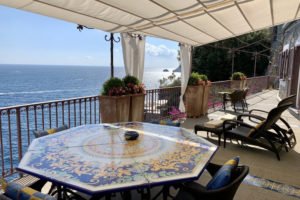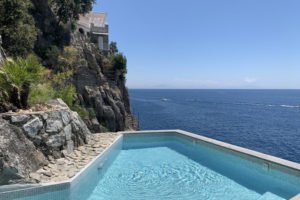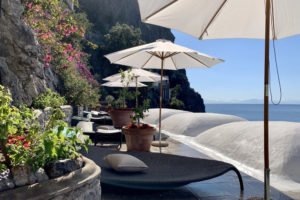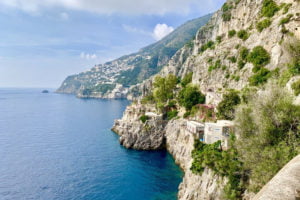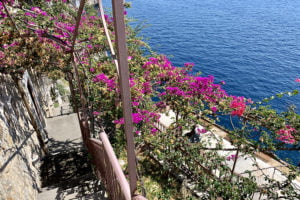One of the gems of the Amalfi Coast, the small town of Furore has been listed as a UNESCO World Heritage Site since 1997.
Made up of inlets, known as Valloni, and rocky slopes that plunge into the sea, the unique landscape of the Amalfi Coast is home to Furore’s most famous landmark: the “Fiordo di Furore”. In spite of its name, this “fjord” which is actually a “ria”, a narrow body of water at the foot of the valley formed by the Schiato stream, which flows through the mountains from Agerola and pours into the sea.
Nestled into the cliffs, the town of Furore is a real hidden gem. From the sea, the houses appear to have grown out of the mountainside.
The centre of the town, home to 837 inhabitants, is made up of three districts: Sant’Agnello, the cat; Sant’Elia, the cicada; and Santo Jaco, the donkey. It is widely recognised as one of the most beautiful places in Italy.
The oldest church in the Furore fjord, made up of three naves, the Chiesa di San Giacomo is beautifully preserved. It has undergone many restorations and renovations over the years, giving the building a style all its own. In addition to its incredible views, the interior of the church is famous for its frescoes.
The Church of San Michele is also divided into three naves, featuring pointed arches, columns without bases, and conical marble capitals.
The small and peaceful Church of Sant’Elia is removed from the centre of town. Designed with a single nave, the church is studied for its geological strata. Inside the building, you can admire a wooden triptych representing the Madonna and Child and Saints Bartholomew and Elia.
It is also the starting point for the path that leads to the Praiano viewpoint, known as the walk of love (passeggiata dell’amore). This area is criss-crossed with many other paths, taking you through expanses of hazel groves and vineyards, where one of the Amalfi Coast’s most famous wines is produced, earning Furore a place in the Associazione delle Città del Vino.
The Furore fjord or Vallone di Furore is home to a small fishing village. Its imposing 30-metre-high bridge, where the state highway passes overhead, is used for the High Diving World Cup every year, attracting athletes from all over the world.
Deep in the fjord, you can visit two ancient factories: the drying rack, used to dry sheets of paper obtained from fabric fibres, and the kiln, where stones were once worked.
From the Vallone di Furore, you can follow the Mad Bats’ Path (Sentiero dei Pipistrelli impazziti) to Punta Tavola. This 30-minute walk will take you through a landscape of dense vegetation.
Made from natural stone, Villa Le Baste seems to have grown out of the rocky cliffs. The property unfolds over multiple levels, from the coastal road down to the sea. Connected by a convenient lift, each floor offers breathtaking views. The villa was recently renovated in the typical colours and materials of the area, capturing the iconic style of the Amalfi Coast. Each unit is equipped with a kitchenette/kitchen, allowing guests to enjoy their independence. The property offers a range of unique and practical features, including a swimming pool nestled among the rocks, a private path to the sea, a lift to every floor, and multiple parking spaces.

